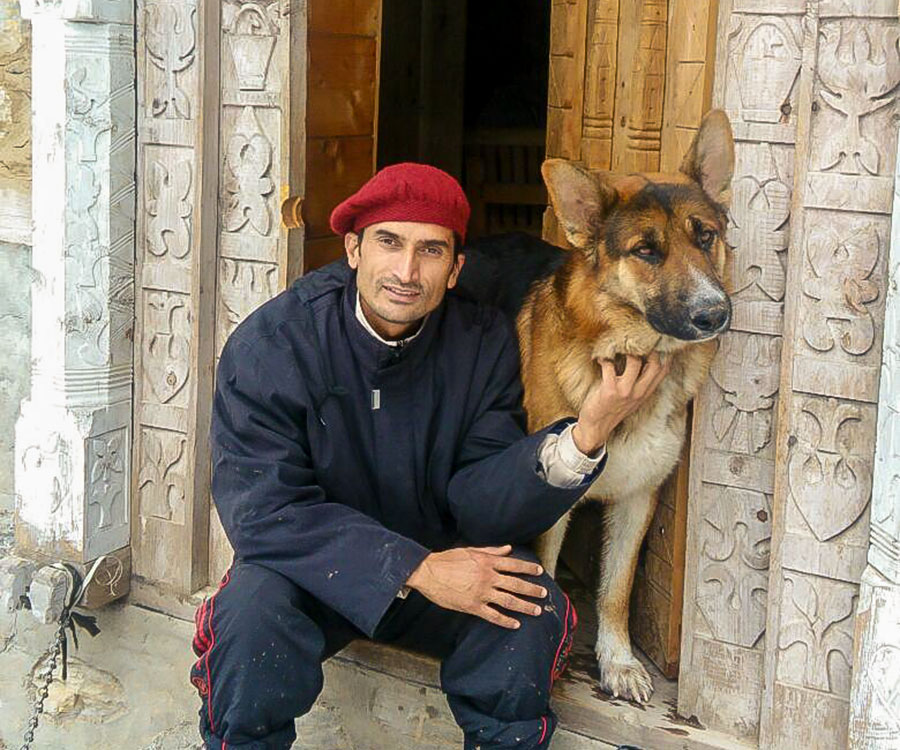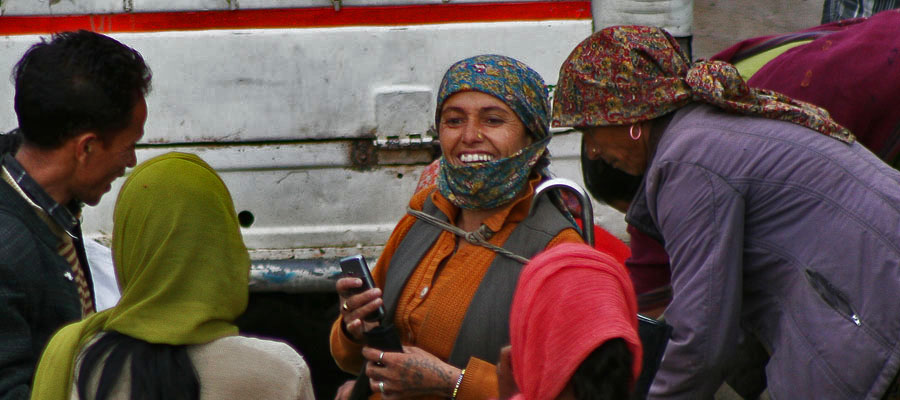
About Us
The Kanasar Ecolodge has been built on the orchard of the Rana family, who live in Koti village in their ancestral home. They are a large joint family and some of the members have moved to nearby Dehradun and Delhi for education and work. A few of them manage small businesses in the locality. The strength of the entire family is seen during weddings and festivals like Bisu and the Magh Mela, where the entire family and village comes together for a celebration.

The Ecolodge is managed by Inder Singh Rana and his brother Rajinder (Raju) & wife Anju. Inder is a qualified mountaineer and is a treasure trove of knowledge about the region, flora, fauna and culture. He has been organising treks and tours in this area for many years. Raju has studied in Delhi and is extremely enthusiastic and friendly, eager to share stories. Anju, a native of Simla, married recently, is a talented and efficient cook. Managing their time between taking care of their guests and working in the fields, they are a dynamic team, and you will get a true taste of the “pahadi” culture, spending a few days with them.

About the Jaunsari Tribe.
This region is inhabited by Jaunsari tribe which dates back to the period of Pandavas of the famous mythological tale Mahabharata. Jaunsar-Bawar comprises of two regions namely Jaunsar which is the lower half and Bawar which is the upper snow clad region. Bawar is a predominant tribal community which resides in the upper regions of the area, having no social contact with the outside world.



The Jaunsari community is primarily agrarian, the seasons and harvest playing an important part in their lives. Dance and music is an integral part of their culture. During festivals both men and women dance to the rhythm of the melodious folk music. The dancers fashion themselves in colourful traditional clothes; representing the rich culture of Jaunsar. They perform folk dances like Barada Nati, Harul and Raso on festive occasions like ‘Magh Mela’ and ‘Bissu’, a type of fair which marks the harvesting period. During Magh Mela villagers sacrifice ‘Maroj’ an ogre to their deity as according to a local legend it is believed that Maroj haunted in the valley for years. Traditionally the Jaunsaris are well versed in the knowledge of the local flora and fauna and the use in medicine.


The practice of polygamy and polyandry was prevalent in Jaunsar-Bawar, but has since died out. Being a stratified society, divided into various castes, some of the other unique customs include a bride price for the woman in marriage and a lack of taboo against divorce.
Architecture

Jaunsari homes are built using stone and mud, combined with a timber frame made of Deodar (Cedrus deodara -is a species of cedar native to the western Himalayas) . This kind of construction is known as “kath-khuni ” where timber lacing is used in the masonry along the walls and around the corners as a stabilising and strengthening course which helps the structure to be earthquake- resistant. Kath-khuni is a type of “cator and cribbage” building construction. The origin of the term is explained as combination of two local terms: kath and kuni. The word kath from the Sanskrit word kashtth, which means wood/timber, and kuni from the Sanskrit word kona, that is, an angle or a corner. It implies having timber on its corner or angles. It is also known as kath-kona, kath-ki-kanni, koti banal etc.
It is usually a two or three storey structure with a linear arrangement of one to four rooms on each floor and is typically sited on a terraced piece of land along the contours of the hill. Stories and myths are translated onto the building through wooden carvings, at corners and entries. The roofs are generally sloping and covered with slate. Due to the scarceness of slate, this is now being replaced by metal sheets.
Food
The food here is cooked according to the season and uses many ingredients that are typical to the region. From Bhang seeds used for chutney to “chuloda” a cake made from pulp of Chuloo Fruit of the apricot family, Steamed colocasia leaves and a variety of lentils, the variety is extremely interesting and stimulating to the palate.